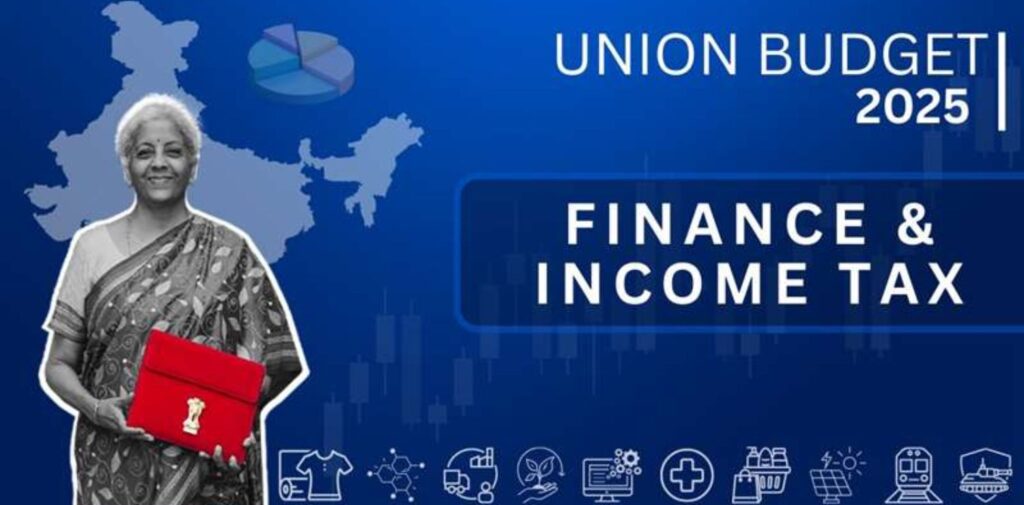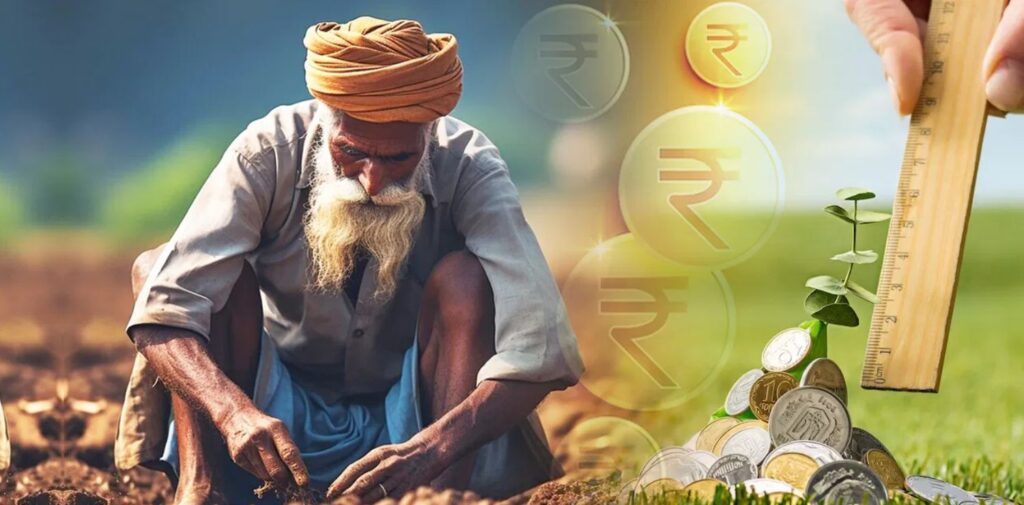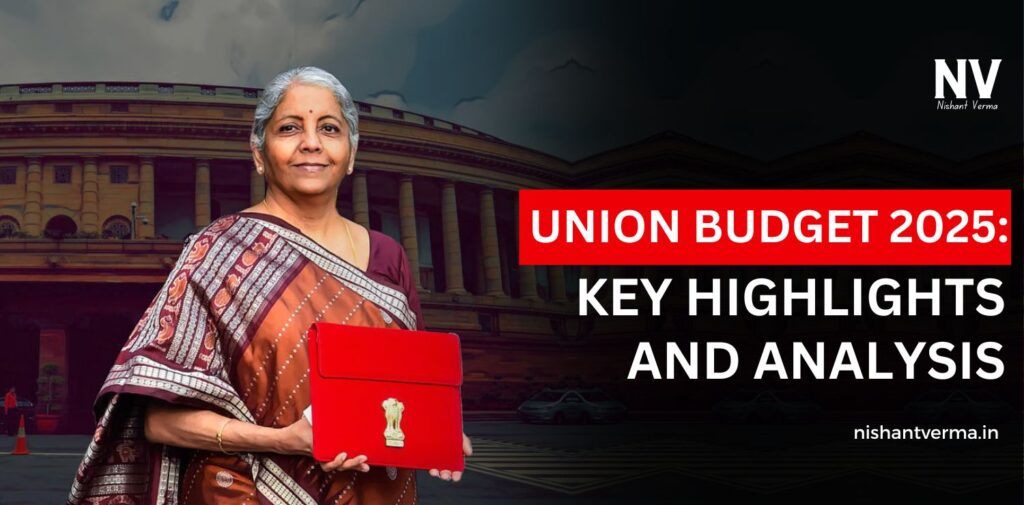The Union Budget for 2025, presented by Finance Minister Nirmala Sitharaman on February 1, has attracted widespread attention due to its focus on economic growth, infrastructure development, income tax relief, and social welfare initiatives. The budget outlines several crucial steps for bolstering India’s economy, improving living standards, and setting the stage for India’s transition to a $5 trillion economy. Below is a detailed analysis of the key announcements made in the 2025 budget, including the allocation amounts for various sectors.
1. Economic Growth and Fiscal Policy
The Union Budget 2025 aims to sustain India’s strong growth trajectory, with a growth forecast of 6.5% for the fiscal year 2025-26. The Finance Minister emphasized that India is well on track to becoming a $5 trillion economy, thanks to the fiscal strategies laid out in the budget.
Key Economic Measures:
- Fiscal Deficit: The government has set a fiscal deficit target of 5.8% of GDP for 2025-26, maintaining a commitment to reduce this deficit gradually in the future.
- Public Investment: A significant focus on infrastructure development has led to an outlay of ₹10 lakh crore for public investments, covering sectors such as roads, railways, and affordable housing. This massive allocation aims to create jobs and stimulate economic growth through the development of critical infrastructure.

2. Income Tax Reforms
Income tax has been a critical area of focus in the Union Budget 2025, with major reforms aimed at simplifying the tax regime and providing relief to the middle-class taxpayer.
Key Tax Proposals:
- New Income Tax Bill: The government will introduce a new Income Tax Bill in the coming week, which is expected to streamline the tax system, making it more transparent and easier to comply with.
- Personal Income Tax Slabs: The Finance Minister proposed a revision of income tax slabs. The new structure will lower the tax burden on middle-income groups, providing significant relief. Taxpayers in lower income brackets will see reduced tax rates, while those in higher income groups will benefit from increased deductions and exemptions.
- Corporate Tax: Corporate tax rates remain largely unchanged, but there will be continued efforts to improve ease of doing business, particularly for small and medium enterprises (SMEs). The government aims to enhance tax compliance while reducing unnecessary paperwork and facilitating smoother GST processes.
3. Infrastructure and Capital Expenditure
The budget underscores the government’s commitment to developing India’s infrastructure, which is seen as the backbone of economic growth and job creation.
- National Highways Network: ₹2.7 lakh crore has been allocated to the expansion and modernization of the National Highways Network. A focus will be placed on creating roads connecting rural areas to urban centers, promoting inclusive growth across regions.
- Railways: A significant ₹2.4 lakh crore allocation has been earmarked for the Indian Railways, aimed at upgrading infrastructure, boosting electrification, and expanding network capacity.
- Affordable Housing: The Pradhan Mantri Awas Yojana (PMAY) will receive a funding boost of ₹79,000 crore, aimed at constructing affordable homes for the urban poor and migrant workers.
- Green Energy Transition: To promote sustainable energy solutions, the budget has allocated ₹19,700 crore for renewable energy projects, including solar, wind, and electric vehicle (EV) initiatives.
4. Social Welfare and Empowerment
The budget continues to prioritize social welfare, especially healthcare, education, and women’s empowerment, with several targeted initiatives.
Key Social Initiatives:
- Healthcare: The government has allocated ₹2.23 lakh crore to the healthcare sector, with an emphasis on improving healthcare infrastructure, strengthening the National Health Mission, and expanding telemedicine services in rural and underserved areas.
- Women Empowerment: For women’s empowerment, the government has committed ₹40,000 crore towards schemes focused on women’s entrepreneurship, financial inclusion, and skill development.
- Education: A substantial increase in funding has been made to education, with ₹1.2 lakh crore allocated for schools, higher education, and digital literacy programs. This funding aims to bridge the educational divide between urban and rural areas, with a focus on enhancing the quality of primary and secondary education.

5. Agriculture and Rural Development
Agriculture remains a critical sector in the Union Budget 2025, with several measures designed to address challenges faced by farmers, promote agri-tech, and ensure food security.
Key Agricultural Proposals:
- Minimum Support Price (MSP): To ensure fair prices for farmers, the government reaffirmed its commitment to a strengthened MSP mechanism. The ₹20,000 crore allocation to support crop procurement will help ensure that farmers receive equitable compensation for their produce.
- Agri-Tech Initiatives: The budget includes a ₹5,000 crore fund for agri-tech innovation, which will promote digital platforms to connect farmers with markets, enhance agricultural productivity, and reduce post-harvest losses.
- Rural Infrastructure: To further strengthen rural infrastructure, ₹60,000 crore has been allocated for irrigation projects, rural roads, and storage facilities, helping farmers improve their yields and reduce the risks associated with poor infrastructure.
6. Industry and Employment
With a focus on boosting the manufacturing sector and creating job opportunities, the budget introduces several measures to support Indian industries and entrepreneurs.
Key Industry and Employment Measures:
- PLI Schemes: The Production Linked Incentive (PLI) schemes have been extended across various sectors such as electronics, pharmaceuticals, and textiles, with a combined allocation of ₹1.25 lakh crore. This is aimed at attracting investment, improving production capabilities, and creating jobs.
- Skill Development: To equip India’s youth with the necessary skills for the job market, ₹30,000 crore has been allocated for vocational training and skill development programs. These initiatives will focus on areas like technology, healthcare, and manufacturing.
- Startups and MSMEs: The budget includes tax incentives and easier access to credit for startups and MSMEs. A dedicated ₹15,000 crore fund will be set up to encourage innovation and entrepreneurship, particularly in emerging industries like AI, clean energy, and biotech.

7. Tax Simplification and Compliance
A critical element of the 2025 budget is the continued focus on simplifying the tax system to ease compliance for businesses and individuals.
- Digital Tax Filing: The government has earmarked ₹1,500 crore for the development of AI-driven tax platforms, which will allow taxpayers to file returns more efficiently. These platforms will ensure that tax filings are quick, accurate, and transparent.
- GST Reform: Additional reforms to streamline the Goods and Services Tax (GST) system have been proposed, with a focus on reducing compliance costs for small businesses. The government will also raise the GST registration threshold to ₹40 lakh for small businesses, easing the burden on the informal sector.
Conclusion: Union Budget 2025
The Union Budget 2025 strikes a careful balance between economic growth, fiscal responsibility, and social welfare. The focus on infrastructure development, income tax relief, and sector-specific support signals the government’s commitment to fostering inclusive growth. With substantial allocations such as ₹10 lakh crore for public investments and ₹2.23 lakh crore for healthcare, the budget sets a solid foundation for India’s continued economic expansion.
As India marches towards becoming a global economic powerhouse, the measures laid out in this budget aim to drive job creation, enhance income levels, and promote sustainable development. Though challenges remain, especially in ensuring equitable growth across regions, the 2025 budget has introduced a comprehensive set of measures that will significantly contribute to India’s economic and social prosperity in the years ahead.




